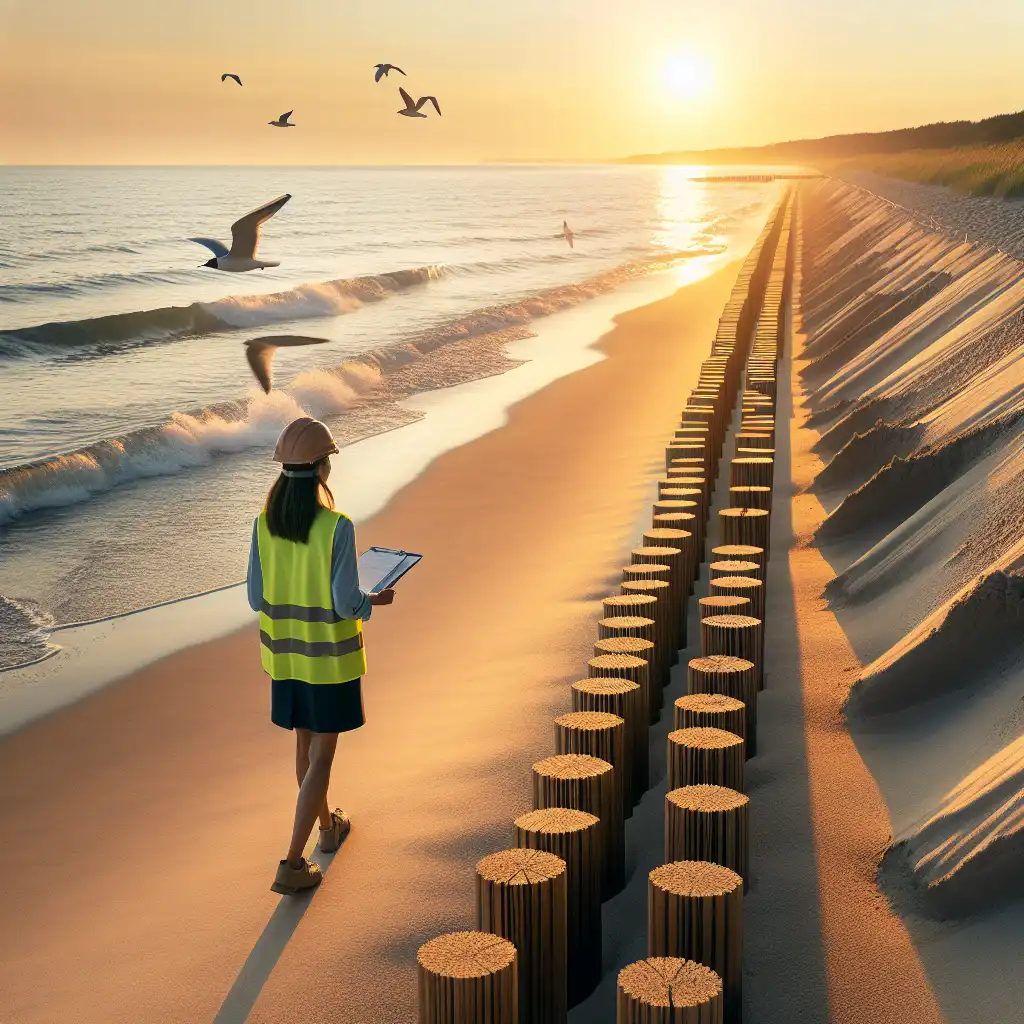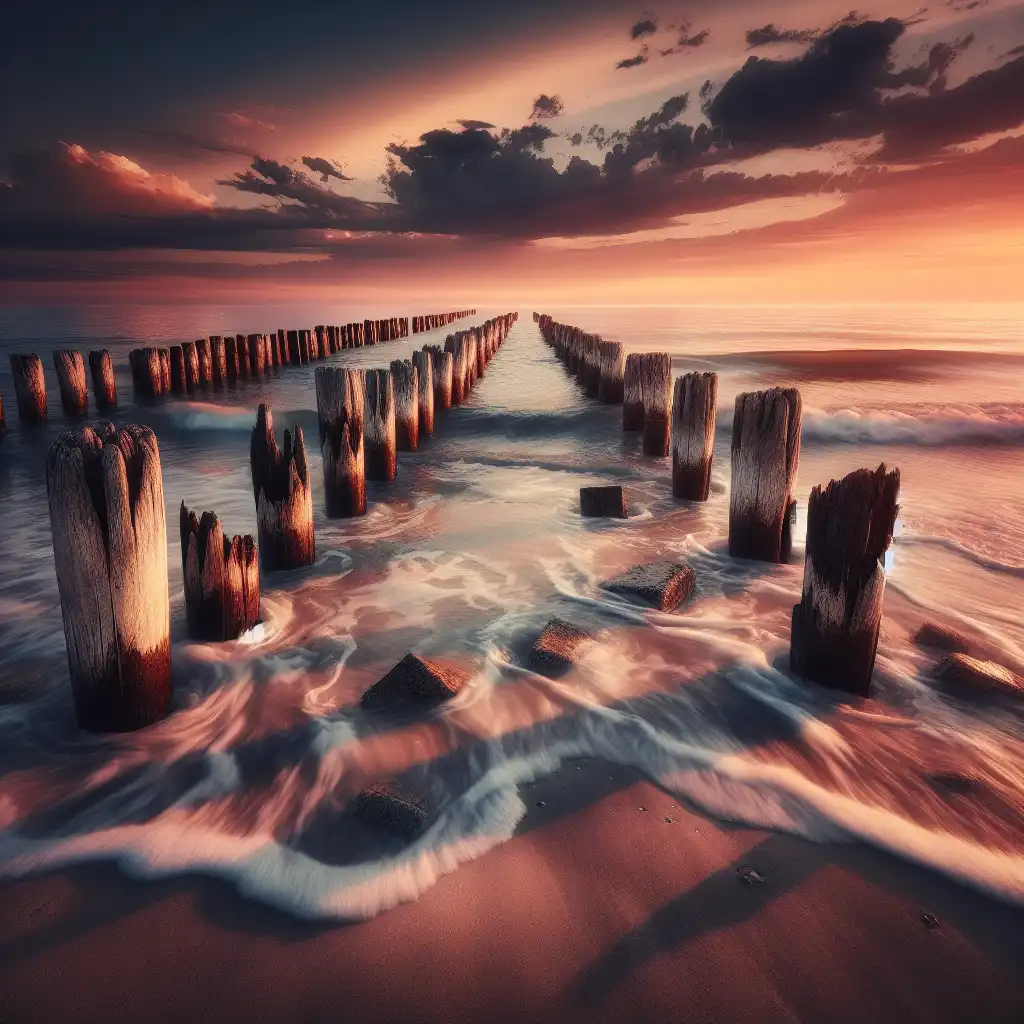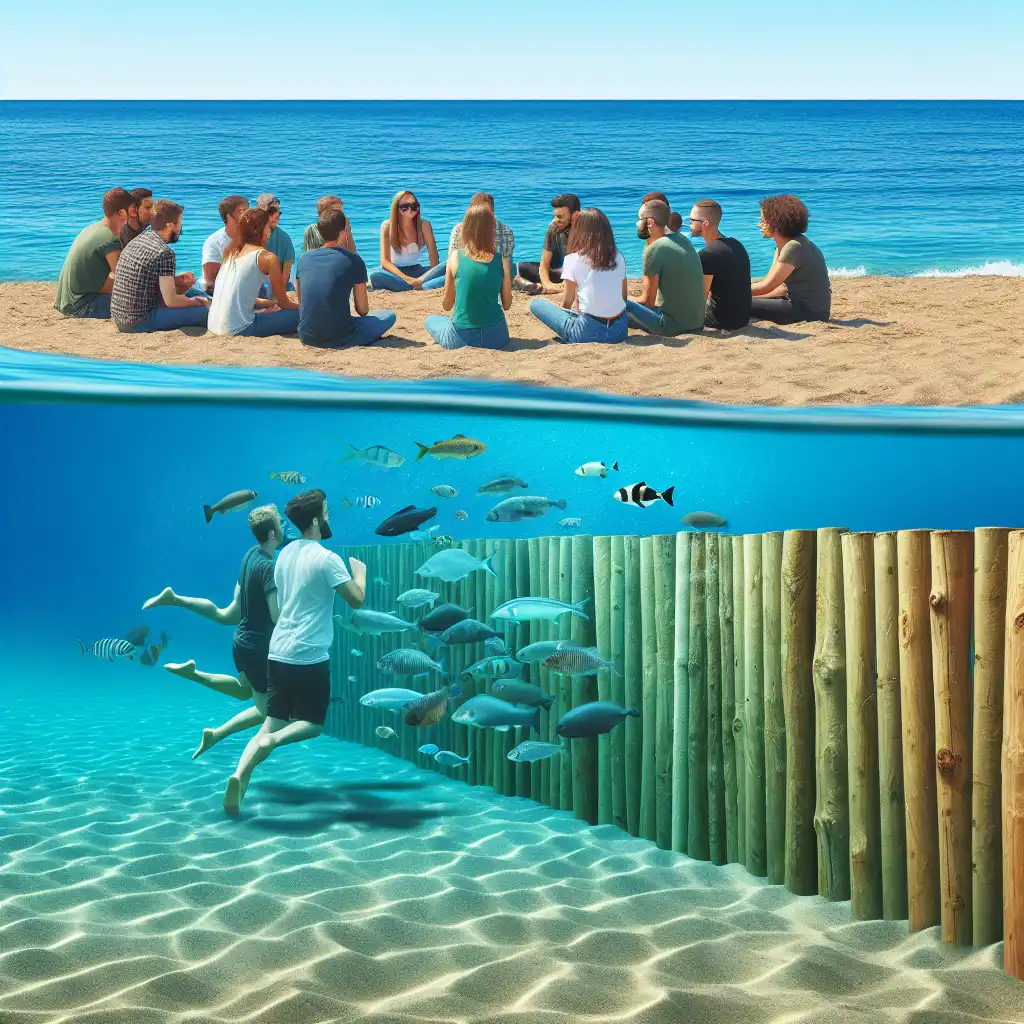
Groyne
Coastal Engineering
Groynes are coastal structures, so they're often mentioned in discussions about beach preservation and engineering.  After studying coastal erosion, the engineer suggested installing several groynes along the shoreline.
After studying coastal erosion, the engineer suggested installing several groynes along the shoreline.
Physical Appearance
Groynes are usually made of wood, concrete, or rock, extending from the backshore into the sea.  The old wooden groynes had been battered by the waves but still stood firmly.
The old wooden groynes had been battered by the waves but still stood firmly.
Environmental Impact
Groynes can be controversial; they change water flow and sand distribution, potentially harming local ecosystems.  Activists debated the construction of a groyne, concerned about its impact on the marine habitat.
Activists debated the construction of a groyne, concerned about its impact on the marine habitat.